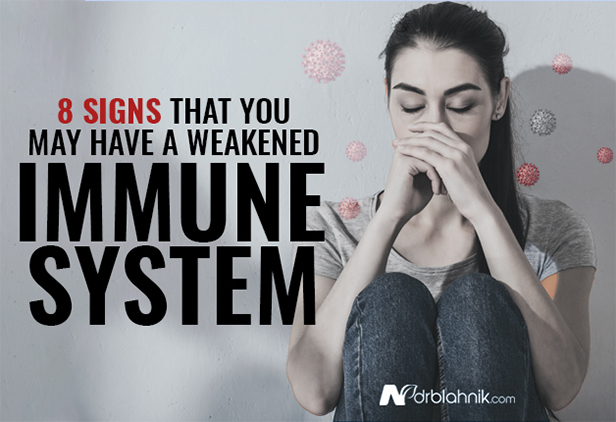Table of Contents
WHAT’S THE CONNECTION BETWEEN TOXIC MOLD AND LYME DISEASE?
Article Summary
- Few are enlightened that Lyme disease and mold can go hand in hand. However, the two conditions are so inter-connected, that some consider mold illness to be a co-condition of Lyme.
- Mold toxicity refers to the various molds that can negatively impact human health. Mold is a mildew or fungi that develops in a range of environments, and there are over 150,000 species in the world.
- Only some of the molds that we are exposed to are dangerous. Some of the most significant dangers of mold come from “mycotoxins”. Some research suggests that mycotoxins could be responsible for DNA damage.
- What some experts refer to as “mold illness,” is a multi-faceted condition called Chronic Inflammatory Response Syndrome, or CIRS.
- CIRS is a condition that was discovered by Dr. Ritchie Shoemaker. According to Shoemaker, 25% of the population could be susceptible to CIRS. Often, Lyme disease can lead to the development of CIRS.
- People with Lyme are more likely to struggle with toxic mold, because their body cannot remove toxins normally. A person with Lyme disease has a damaged immune system, which makes it harder to overcome mold illness. Additionally, the mold illness can stop Lyme treatments from working.
- The first step in treating toxic mold illness is removing the patient from the unhealthy environment. It’s also crucial to clean the environment thoroughly and remove all mycotoxins.
- Bowel movements must be supported when treating for mold illness, as they will help to rid the system of any internal toxins.
- Once the environment has been cleaned, steps can be taken to support the detoxification process. This might include checking for co-existing conditions, and using supplements to aid in the detox.
TOXIC MOLD EXPOSURE AND LYME DISEASE
Many people who suffer with chronic Lyme disease continue experiencing symptoms because something, often times multiple issues, are standing in the way of their recovery. If you have been treated for Lyme, but are still unwell, one of the underlying issues could be toxic mold exposure.
If you live, or work in a water-damaged area, then your body could be building up mold toxins. These toxins, known as “mycotoxins”, can trigger inflammation and damage your immune system. This means that exposure to mycotoxins is harmful on its own, but it can be particularly detrimental in people suffering from chronic Lyme.
According to Dr. Raj Patel, almost half of all unresolved Lyme cases could be linked to mold illness. Since both conditions cause similar symptoms, like joint pain and brain fog, it can be difficult to distinguish between the two.
Lyme disease is a condition spread through contamination with a spirochete bacteria. These bacteria are transferred sometimes by a tick bite, although there are other organisms that can transmit Lyme. Toxic mold illness comes from exposure to water-damaged buildings. Though you might not expect a relationship to exist between these two conditions, they often co-exist.
Many professionals consider “biotoxin illness”, or mold illness to be a co-condition of Lyme. When the body is exposed to mold mycotoxins during a Lyme infection, the system can weaken and suffer significantly. Until recently, the Lyme medical community has not recognized the connection between mold toxicity and Lyme disease.
There are often multiple toxicities linked with Lyme disease. Even mercury can interact with Lyme recovery. However, one of the most common co-conditions for Lyme sufferers is mold toxicity. Here, we’ll look at what mold toxicity is, what the symptoms are, and what you can do to overcome your condition. The quicker you recover from mold toxicity, the faster you can start to heal from Lyme.
Identifying Mold Illness and Lyme Disease
Mold toxicity is a term that describes how different molds can damage humans in excess quantities. Mold is a fungi or mildew that develops when in the presence of the right environment. The chances are you’ve seen mold on everything from old food to bathroom grout and basement wood. Today, there are more than 150,000 types of mold – though not all species are harmful to humans.
It is possible to suffer from a mold illness or a mold allergy. An allergy often presents itself in a more serious reaction than an illness. In allergic instances, mold causes inflammation in the body that prompts the immune system to malfunction. This allergic response is recognized as a biotoxin illness called Chronic Inflammatory Response Syndrome.
The reason you get ill from mold is that you inhale the spores, which reproduce within your lungs, and damage your immune system. The different types of molds that are toxic to humans, and sometimes linked with Lyme disease, include:
- Stachybotrys: The most serious form of mold toxicity. This type of mold includes black mold, and can be responsible for eye irritation, respiratory issues, and central nervous system malfunction. In severe cases, black mold has been linked to nerve and brain damage, as well as cancer, and even death.
- Memnoniella: Mycotoxins found alongside black mold. This substance affects both humans and animals.
- Penicillium: A type of mold that can be found in food, dust, and decaying materials. There are over 160 species of Penicillium, and symptoms of exposure can include rashes, vomiting, and hair thinning.
- Cladosporium: A dark-green or black substance found indoors and outdoors. There are more than 30 species of this mold. These substances cause asthma, nail fungus, and sinusitis.
- Fusarium: Found in water-damaged environments. These molds are associated with infections and eye irritation. They can also cause internal bleeding, diarrhea, and reproductive issues in females.
- Mucor: Found in animal droppings and soil. The most common symptom of exposure to this mold is a lung infection.
- Anternaria: Found in plants and soil. When inhaled, this mold causes allergic reactions, hay fever, and asthma.
Mold and Mycotoxins
Molds produce substances that may be harmful to our health. Fungi produce active biological compounds that can be volatile. When these substances are released into the air, they can be inhaled, leading to serious respiratory reactions.
The most significant dangers of Mold come from poisonous elements called “mycotoxins”. Over 200 different mycotoxins have been discovered in connection with common molds. There’s some evidence that these substances can cause DNA damage.
Some of the mycotoxins that have seen the most attention over the years are those produced by Aspergillus Veriscolor, and Stachybotyrs Chartarum. Even in tiny quantities, mycotoxins are easily absorbed by the body. Some are so toxic that they were studied as biological warfare agents in the 1940s.
Even if the spores you are exposed to are not able to reproduce, they can still damage your health. In other words, dead spores are just as dangerous as the live ones. Scientists believe that mycotoxins help mold organisms to remain competitive in the biological environment. They kill other organisms that attempt to thrive in the same environment.
When a patient compromised by Lyme, or chronic Lyme is exposed to mycotoxins, the mold symptoms that occur can neutralize the healing solution prescribed. Your treatment plan for Lyme might be more effective if you tackle mycotoxins too.
If the reason for your continued Lyme illness is mold illness, then your home or workplace needs to be cleaned immediately. The same rules apply for anyone exposed to tick-borne illnesses. Certified mold inspections need to be used, with state-of-the-art technology to seek out hidden sources of moisture that might trigger mold growth.
Mold Illness and CIRS
Up until recently, the connection between mold and human health has been largely ignored. Not only has the medical community failed to consider the problem that mold could be having on Lyme patients, but the impact that mold can have in general has been widely overlooked.
Today, what many experts refer to as “mold illness” may be a more complicated syndrome. This syndrome is a multi-faceted illness called “Chronic Inflammatory Response Syndrome”, or CIRS. The illness “CIRS” was first identified by Dr. Ritchie Shoemaker.
During the 1990s, Dr. Shoemaker found a connection between an illness his patients had, and toxic exposure to something called Pfiesteria. Since that time, Shoemaker has linked various illnesses to toxins, organisms, and chemicals. These agents, known as “biotoxins”, are often found in water-damaged buildings, and can include:
- Fungi
- Mold
- Bacteria
- Actinomycetes
- Mycobacteria
- Mold
- Mold spores
- Beta-Glucans
- Endotoxins
- mVOCS (Microbial volatile organic compounds – released by micro-organisms when an adequate food supply is available).
When exposed to high enough levels of these biotoxins, almost anyone could become ill. However, most people will recover automatically when the substance causing the problem is removed. The natural system for detoxification in our bodies – the immune system – recognizes biotoxins. Once your immune system has identified that biotoxins are causing inflammatory responses, it can begin to eliminate them.
However, some people have the “human leukocyte antigen”, or HLA gene, that prevents the body from eliminating biotoxins. In these cases, the toxins remain in the body and cause a chronic response, leading to the development of CIRS. According to research from Dr. Shoemaker, around 25% of the population may develop CIRS. The only two conditions that are needed to promote this condition are:
- Exposure to a sufficient level of biotoxins.
- Exposure to an inflammatory event: such as Lyme disease, which causes a severe upper respiratory tract infection.
According to a report published by the Federal Facilities Council, 43% of the buildings they examined had current water damage, while 85% had previous water damage. The combination of a growing susceptibility to CIRS, and a range of water-damaged building could cause serious problems.
Unfortunately, most people with CIRS are not properly diagnosed with the disease and therefore go untreated. The reason for this is that many medical specialists are still not looking for CIRS.
Most CIRS patients also meet the criteria set for other diseases and syndromes, confusing the actual diagnosis. Connections with post-treatment Lyme disease, Fibromyalgia, and ME, magnify the problem. Typically, CIRS patients experience a wide range of vague symptoms, including but not limited to:
- Chronic weakness and fatigue
- Post-exertional malaise
- Confusion and general feelings of disorientation
- Problems with memory management
- Difficulty with concentration and cognitive function
- Progressive headaches
- Lightheadedness and Vertigo
- Aching in the muscles
- Cramps
- Joint pains without inflammatory arthritis symptoms
- Asthma-like illnesses which include coughs, sinus congestions and coughs
- Significant sensitivity to bright lights, blurred vision and eye tearing
- Abdominal problems such as cramping, diarrhea, and nausea
- Static shocks
Obviously, many of the symptoms associated with CIRS are non-specific. This means it would be difficult for medical professionals to use them to single-handedly to define the illness.
WHY PEOPLE WITH LYME STRUGGLE MORE WITH TOXIC MOLD
One of the most significant issues that Lyme-disease sufferers face is that they struggle to release toxins from the body. Lyme disease patients cannot naturally get rid of biotoxins even when removed from the source of the exposure.
When the immune system is struggling to work at full capacity, a common problem for Lyme sufferers, you struggle more with exposure to illness. Because the immune system is already struggling with Lyme disease, you might experience the results of mold sickness more strongly than someone with a mold allergy.
Additionally, people with Lyme disease can develop chemical and mold sensitivities after beginning treatment. Many sufferers experience intolerances during treatment that can prompt additional allergic reactions. Though you may have always had an underlying mold allergy, you may not have experienced severe symptoms before acquiring Lyme. This is because Lyme disease brings out the allergens more aggressively in response to the toxins in your body.
How to Treat Toxic Mold Illness
The first step in treating Toxic mold illness is to remove yourself from the contaminated environment. This either means leaving the place until it has been fully cleaned, or taking steps to minimize biotoxins in your home or office.
Some of the ways that you can minimize biotoxins in your current environment include:
- Fixing plumbing leaks or moisture problems as soon as possible
- Allow all areas to dry completely before scrubbing the mold away from hard surfaces with detergent
- Discard any absorbent materials, including carpet and ceiling tiles.
- Do not paint or caulk surfaces that are contaminated with mold
- Repair and clean guttering regularly
- Keep air condition pans clean, and drain lines unobstructed
- Try to ensure that the ground slopes away from your building foundation, to reduce the risk of gathering water
- Maintain indoor humidity at between 30 and 50 percent. Venting bathrooms, dryers, and moisture-generating devices outdoors can help; Use exhaust fans when you cook, clean, and even wash dishes
- Don’t install carpets in any areas with perpetual moisture problems
While improving the air quality of your building, and removing potential biotoxins, it could be worth your while to introduce air sanitizers. For instance, a HEPA filter can help to remove ultra-fine particles from the air such as VOCs, mold, dust, and pet dander.
The “Shoemaker Protocol” is a treatment solution designed for chronic mold exposure and mold illness. It recommends using binders like cholestyramine and charcoal to bind internal mycotoxins. It may also be worth using substances to support the development of glutathione in the gut, which can be depleted in toxin-based illnesses.
It is important to remember that when you are using binders, you need to take steps to ensure that you maintain proper bowel functions and avoid constipation. A few ways to limit your risk of constipation might include using vitamin C, and/or magnesium. However, it is crucial to keep your bowel movements running smoothly, as this is how you will be removing the toxins from the mold from your body.
Supporting Detoxification in the Body
When supporting the detoxification process in your body, it is important to take steps to help you rid your system of any colonized mold or fungal infections. This might include infections in the vagina, bladder, gut, sinuses, or lungs. You might consider testing for candida overgrowth. Sometimes, living in an environment that is rich with mold mycotoxins can lead to immune dysregulation. The problems with your immune system that are compounded by Lyme could cause Candida to over-grow in your system.
Remember that supplements can be used to aid in the detox process. For instance, useful substances might include:
- Glutamine
- Liposomal glutathione
- Milk thistle
- Methylation support (B6 and riboflavin)
- Alpha Lipoid Acid
Additionally, you should take steps to avoid foods that could make your condition worse. While certain nutrients might balance your system when you’re struggling with mold illness, others will create a perfect environment for bacteria. Some foods even contain their own mycotoxins, which could lead to additional overgrowth in your system when you are battling against mold illness. Some foods to avoid foods include corn, barley, rye, wheat, and cheese. You should also stay away from alcohol, oats, pistachios, dried fruit, cocoa, coffee, bread, and beans.








